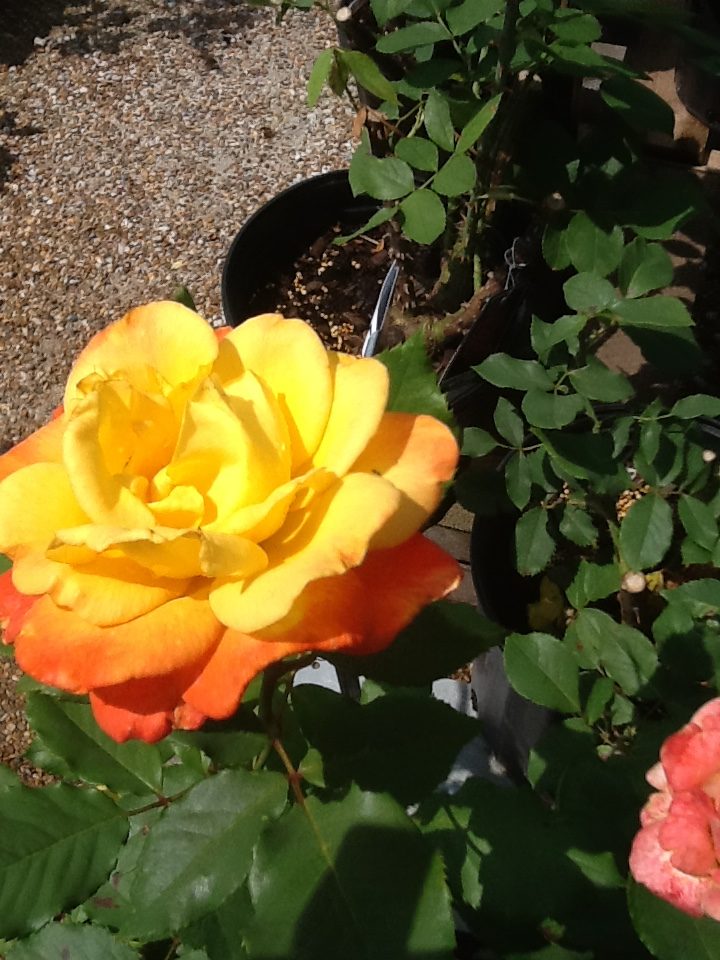 Roses are 50% off at Standley Feed & Seed. These classic beauties are available now at our Garden Center. Hurry in for the best selection and see these tips below on how to plant, water and prune roses from the Farmer’s Almanac.
Roses are 50% off at Standley Feed & Seed. These classic beauties are available now at our Garden Center. Hurry in for the best selection and see these tips below on how to plant, water and prune roses from the Farmer’s Almanac.
Rose bushes come in a variety of forms, from climbing roses to miniature rose plants, blooming mainly in early summer and fall. Enjoy the beautiful plants take good care of them with these tips below:
Planting Tips
Plant roses where they will receive a minimum of 5 to 6 hours of full sun per day. Roses grown in weak sun may not die at once, but they weaken gradually. Give them plenty of organic matter when planting and don’t crowd them.
Wear sturdy gloves to protect your hands from prickly thorns. Have a hose or bucket of water and all your planting tools nearby. Keep your bare-root rose in water until you are ready to place it in the ground.
Roses can be cut back and moved in either spring or fall, but not in midsummer, as they might suffer and die in the heat. Large rose canes can be cut back by as much as two thirds, and smaller ones to within 6 to 12 inches of the ground.
When you transplant your roses, be sure to dig a much bigger hole than you think you need (for most types, the planting hole should be about 15 to 18 inches wide) and add plenty of organic matter such as compost or aged manure.
Some old-timers recommend placing a 4-inch square of gypsum wallboard and a 16-penny nail in the hole to provide calcium and iron, both appreciated by roses.
Watering Roses
Diligently water your roses. Soak the entire root zone at least twice a week in dry summer weather. Avoid frequent shallow sprinklings, which won’t reach the deeper roots and may encourage fungus. Roses do best with 90 inches of rain per year, so unless you live in a rain forest, water regularly.
Roses love water—but don’t drown them. That is, they don’t like to sit in water, and they’ll die if the soil is too wet in winter. The ideal soil is rich and loose, with good drainage. One of the worst mistakes you can make is to not provide adequate drainage.
Use mulch. To help conserve water, reduce stress, and encourage healthy growth, apply a 2- to 4-inch layer of chopped and shredded leaves, grass clippings, or shredded bark around the base of your roses. Allow about an inch of space between the mulch and the base stem of the plant.
Feeding Roses
Feed roses on a regular basis before and throughout the blooming cycle (avoid chemical fertilizers and pesticides if you’re harvesting for the kitchen).
Once a month between April and July, apply a balanced granular fertilizer (5-10-5 or 5-10-10). Allow ¾ to 1 cup for each bush, and sprinkle it around the drip line, not against the stem. See our fertilizer guide for more information.
In May and June, scratch in an additional tablespoon of Epsom salts along with your fertilizer; the magnesium sulfate will encourage new growth from the bottom of the bush.
Pruning Roses
Prune roses every spring and destroy all old or diseased plant material. Wear elbow-length gloves that are thick enough to protect your hands from thorns or a clumsy slip, but flexible enough to allow you to hold your tools. Always wear safety goggles; branches can whip back when released.
Start with pruning shears for smaller growth. Use loppers, which look like giant, long-handle shears, for growth that is more than half an inch thick. A small pruning saw is handy, as it cuts on both the push and the pull.
Deadhead religiously and keep beds clean. Every leaf has a growth bud, so removing old flower blossoms encourages the plant to make more flowers instead of using the energy to make seeds. Clean away from around the base of the rose bushes any trimmed debris that can harbor disease and insects.
Late in the season, stop deadheading rugosas so that hips will form on the plants; these can be harvested and dried on screens, away from sunlight, then stored in an airtight container. Stop deadheading all your rose plants 3 to 4 weeks before the first hard frost so as not to encourage new growth at a time when new shoots may be damaged by the cold.
Source: Farmer’s Almanac
